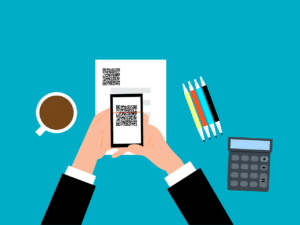Many companies have had to quickly come up with a plan to transition their employees to working from home remotely.
While this offers a way to keep operating while also preventing the spread of the virus, telecommuting also opens up new security risks.

Due to the pandemic, companies have not had a lot of time to prepare for this transition, with many having just a week or so to implement a remote workforce.
Remote workers have their own distinct set of IT security considerations, beyond what you may have put in place on site at your office.
70% of IT professional believe that remote employees pose a higher cybersecurity risk than in office workers.
Have you had to quickly send your team home to work? Are you planning to transition to a remote workforce soon?
You’ll want to read on to learn the key security protocols you need to enact to ensure remote workers aren’t increasing your risk of a costly breach or malware infection.
What Should We Be Doing to Secure Remote Employees?
The coronavirus outbreak may have put many businesses on lockdown and completely changed the way they operate, but scammers are still operating as usual.
Cybersecurity remains as top concern, but if you employ the following security tips, you can sleep much easier at night knowing your remote infrastructure is safeguarded.
Have Employees Segment Their Router
Attacks on Internet of Things (IoT) devices have skyrocketed and recent years, and 75% of those attacks are on routers.
Which can include everything from a child’s voice activated speaker to a laptop used for work. One infection on a device, can quickly spread through the network to other devices.
To mitigate this risk, have employees set up a guest network that can be used only for their work devices. This separates their connection from all the others in the house (which may be higher risk).
Use Two-Factor Authentication for Account Logins
If you’re not already using two-factor authentication, you should be. It’s one of the best ways to combat credential theft or the use of weak passwords.
74% of data breaches are initiated with compromised credentials that allow a hacker to login to one of your accounts as a user.
Just the simple step of inputting a code that’s sent to a trusted device in addition to a username/password combination can stop hackers in their tracks and keep them out of your data.
Deploy a Business VPN
How do you secure employee wireless connections when they could be connecting from anywhere (including a local Starbucks)? You put an encrypted security layer between them and the internet.
This is done with a virtual private network (VPN) and can be used on any device (computer and mobile) to encrypt traffic and prevent data leakage.
Require Physical Security (i.e. Screen Locks)
If your employee steps away from their laptop, they’re likely not going to worry about anything happening to it when it’s in their own home.
But what if a sensitive client file is up on the screen and seen by someone else? That could result in an inadvertent compliance violation of a standard like HIPAA.
Have employees use screen locks on the devices that have access to business data. And have them set a fairly short time period for the lock to deploy. This will help reduce the risk of accidental exposure to confidential business data.
Use Managed Services for Remote Employees
Managed IT services aren’t just for on-premises equipment. Employees working remotely also need to have things like patch/update management, backup and recovery, and managed antivirus on their devices.
When you use managed security solutions, you’re not having to wonder if each employee is properly updating their computer. Instead, it’s all handled for your entire team remotely by professionals.
Have Employees Use Phishing Protection
Phishing remains the number one method for cyberattacks. Often, phishing emails use links to malicious sites to get past security tools and infect a system with ransomware, spyware, or something else.
Phishing protections will help your employees avoid becoming a phishing victim and they include safeguards such as:
- DNS Filtering: Redirects a browser away from a malicious URL. Keeping your employees safe even if they’ve clicked a dangerous link.
- Anti-Phishing Software: Software specifically designed to detect phishing emails and block them from going to your users’ inboxes.
Need Help with a “Work from Home” Transition?
Whether you’re about to have employees work from home or you’ve already started a remote work transition, RCOR can help.
We’ll ensure your remote workforce has the tech support and security they need to stay productive.
Contact us today for remote workforce solutions. Call 919-263-5570 or contact us online.




